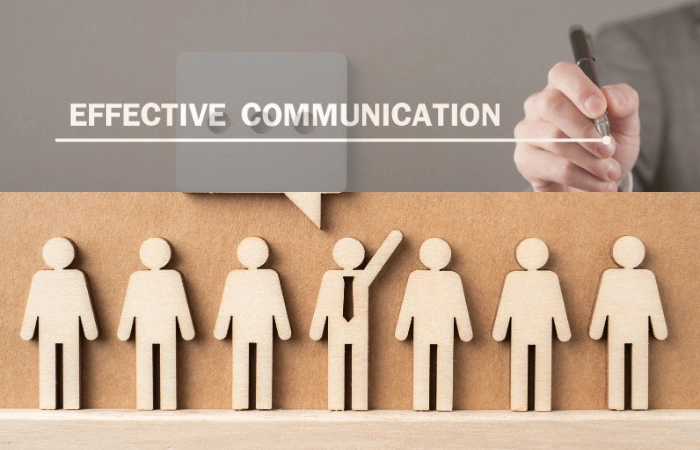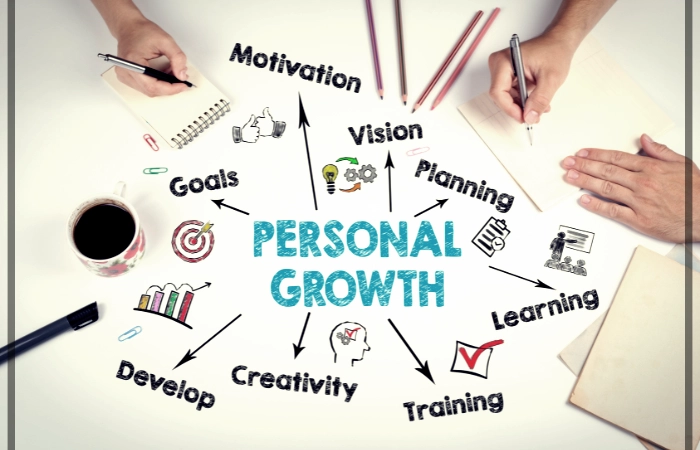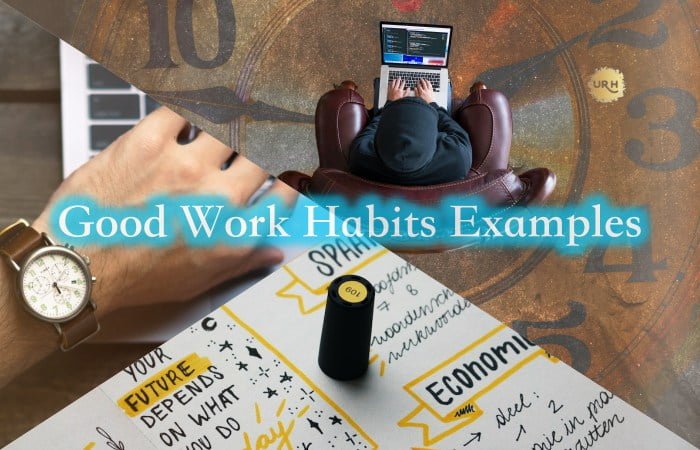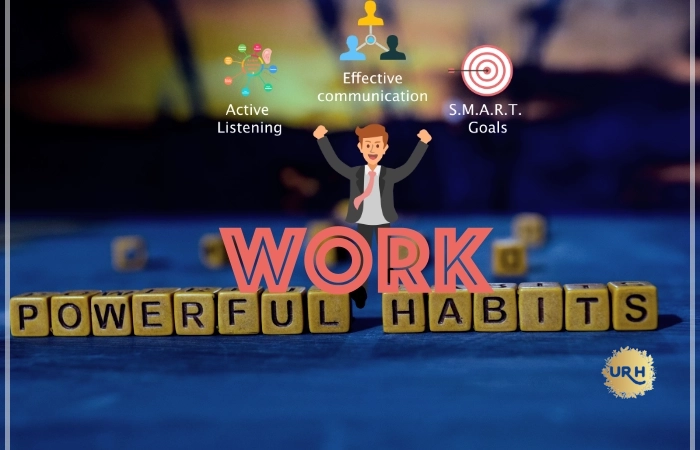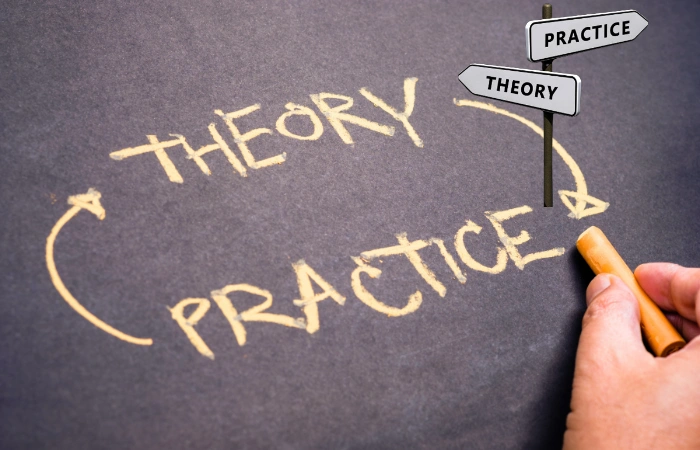How to Read Faster and Consume More Books in Less Time – 3 Secrets of Speed Reading
By knowing how to read faster, whether you’re a student trying to tackle a bunch of textbooks or a professional striving to stay ahead in your field by obtaining knowledge is going to help.
Your ability to read faster can be a game changer.
In this blog I will help you with “Secrets of Speed Reading”, You will go through the secrets of speed reading and I will provide you with practical techniques on how to read faster and consume more books in less time
The Importance Of Knowing How To Reading Faster
Your basis of education and personal development is laid by reading, it is a crucial ability. Traditional reading techniques, that you know, can be sluggish and time-consuming.
Your reading productivity and efficiency can be greatly improved by learning to read more quickly and by adopting certain techniques (chunking, pre scanning).
What if you could read a book in half the time you would usually need to?
Learning how to read fast will save you time and at the same time you can utilise it to pursue your other hobbies or other important things.
How To Read Faster And Retain More Information – What Is The Science Behind

Before beginning to practice speed reading techniques, I suggest understanding the science behind speed reading. Traditional reading techniques, meanwhile, frequently slow down this processing speed.
The goal of speed reading techniques is to overcome traditional methods of learning which need more time to read the same amount of text and unlock the full capacity of the brain to read fast and grasp more information.
Eliminating subvocalisation, the practice of silently speaking words as you read, is a crucial component of fast reading.
You can considerably speed up reading by teaching your brain to recognise words and phrases without the requirement for subvocalisation.
Speed Reading Techniques – How To Read Faster And Retain More
Many of us have this question, how to read a lot in a short time? Now let’s explore some practical techniques to improve your reading speed.
Let’s look at in detail some of the techniques of speed reading like chunking, pre-scanning, pacer, and skimming.
These secrets of speed reading will answer the question “How to Read Faster?” for you
Chunking Technique:
Chunking is a speed reading technique that involves grouping or clustering words together to read them as a single unit, rather than individually.
By grouping or clustering words together you can increase your reading speed and comprehension by reducing the number of eye movements required to read the text.
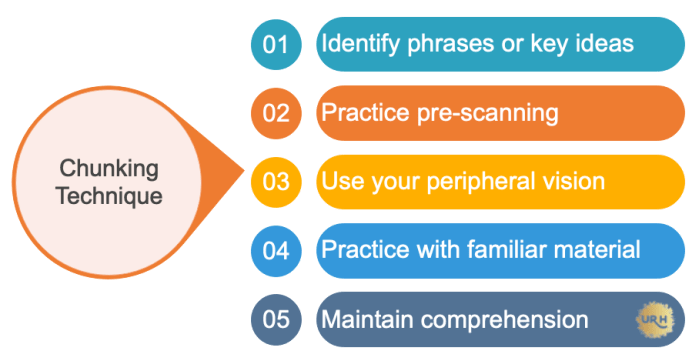
Let’s go into the details of the chunking technique along with some examples:
1. Identify Phrases Or Key Ideas
When you’re reading, try to identify phrases or key ideas within the text. These can be a group of words that convey a complete thought or meaning in to that particular line of text, by focusing on these chunks, you can grasp the main points more efficiently/fast.
Example: Consider the sentence, “The quick brown fox jumps over the lazy dog.” Instead of reading each word individually, you can group them into meaningful chunks like “The quick brown fox,” “jumps over,” and “the lazy dog.”
2. Practice Pre Scanning
Before diving into the text, take a moment to scan the material and look for headings, subheadings, bold or italicised words, and bullet points.
These visual cues can help you identify the main ideas in those lines and text and this can facilitate chunking during the actual reading process.
3. Use Your Peripheral Vision
Instead of focusing on individual words in the center of the page, try to expand your gaze and take in more words with your peripheral vision, this way, you can capture multiple chunks of text in line simultaneously, which will help you to read faster.
Example: When reading a paragraph, aim to fixate your eyes on the center and use your peripheral vision to capture groups of words on either side.
Your eyes will move less, and you’ll be able to process more information at once.
4. Practice With Familiar Material
Start practicing chunking with texts that you are already familiar with. This can be a book or an article that you’ve read before.
Since you’re already aware of the content, your focus can shift to grouping words and phrases together more effectively.
Example: Revisit a favourite book or an article you enjoyed in the past. As you read, consciously try to chunk the sentences into meaningful units, combining related words or phrases.
5. Maintain Comprehension
While the goal of chunking is to read faster, it’s essential to maintain comprehension. Ensure that you understand the meaning of each chunk during the line reading.
Also understand how it contributes to the overall context in that line and paragraph.
Avoid sacrificing comprehension for speed.
Example: Let’s say you’re reading a complex scientific article. While chunking, ensure that you grasp the meaning of each scientific term or concept within the group of words.
Remember, the chunking technique is a skill and you can improve it with reading practice.
Initially, it may feel unnatural, but with consistent effort, you’ll become more proficient at grouping words and reading faster without sacrificing understanding.
Pacer Technique:
The speed reading technique called “pacer” involves using a visual guide or pointer to track your reading progress and maintain a steady pace. The pacer can be your finger, a pen, a highlighter, or a specialised tool.
Here’s a detailed explanation of the pacer technique along with some examples:
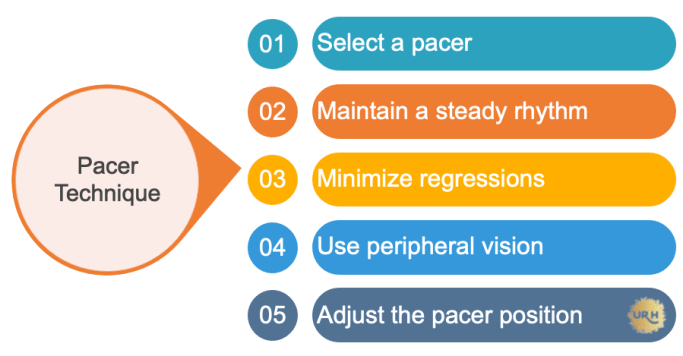
1. Select A Pacer
Choose a tool to serve as your pacer. It can be your finger, a pen, a highlighter, or even a specialised pacer designed for speed reading.
The purpose of the pacer is to keep your eyes focused and guide them along the lines of text.
Example: Let’s say you’re using your finger as a pacer. Position it just below the line of text you’re reading, and as you read, move your finger from left to right, following the words on the page.
2. Maintain A Steady Rhythm
The key to effective pacing is to maintain a consistent and comfortable rhythm. Avoid going too fast or too slow during your reading time.
Find a pace that allows you to read smoothly without losing comprehension or straining your eyes.
Example: Experiment with different speeds to find your optimal pace. Start with a moderate speed, and adjust accordingly based on your comfort and comprehension level.
3. Minimize Regressions
Regressions are the habit of backtracking or re-reading words or phrases. Pacing helps minimise regressions by keeping your eyes focused ahead and discouraging the tendency to go back unnecessarily.
Example: As you use the pacer, resist the temptation to go back and re-read a sentence or paragraph. Trust that your eyes are moving at an appropriate speed and continue progressing forward.
4. Use Peripheral Vision
When using the pacer, try to expand your gaze and use your peripheral vision to capture the words on either side of the pacer.
This helps you in reading more words in a single glance in that line of text and reduces unnecessary eye movements as you are reducing the area of text.
Example: As you move your finger or the pacer tool from left to right, train your eyes to capture the words to the left and right of the pacer without fixating on each word individually.
5. Adjust The Pacer Position
Experiment with the placement of your pacer to find what works best for you (try to reduce the area or increase it).
Some people prefer to keep the pacer just below the line they’re reading, while others find it helpful to place it slightly above the text.
Example: If you’re using your finger as a pacer, try positioning it slightly above the line of text and move it smoothly across the page.
Skimming Technique:
As a fast reading strategy, skimming is swiftly scanning a text to acquire a sense of its basic substance.
Fast reading will help you when you need to quickly evaluate a lot of information or are looking for specific information.
Without reading every word, skimming enables you to glean the important points, core concepts, and overall organisation of work.
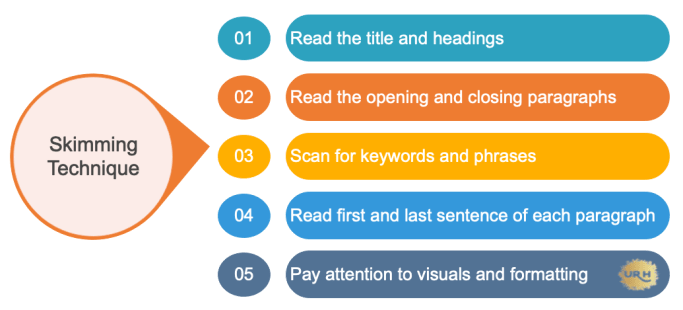
1. Read The Title And Headings
Begin by reading the title of the text and any headings or subheadings.
Example: If you’re skimming an article titled “The Benefits of Regular Exercise,” pay attention to the title and any headings like “Improved Cardiovascular Health”.
2. Read The Opening And Closing Paragraphs:
In this technique, we learn to read the first and last paragraphs of the page. These sections often provide a summary or overview of the main points discussed within the text.
Example: Skim through the first and last paragraphs of an article to capture the author’s main argument, the purpose of the text, and any concluding remarks.
3. Scan For Keywords And Phrases
We look for keywords and phrases that are bolded or italic, this indicates it is an important part of the reading.
These often highlight important concepts or information. Pay attention to lists, bullet points, or numbered items as well, as they tend to highlight key points.
4. Reading The First And Last Sentence Of Each Paragraph
First, read the first line of the paragraph and then read the last sentences of each paragraph on the page, this helps you to get an idea of the main thing discussed/written within the paragraph.
Example: By skimming the first and last sentences of a paragraph, you can gather the topic sentence (the main idea) and any concluding statements or summaries.
5. Pay Attention To Visuals And Formatting
Skimming involves looking beyond the text itself. Visual elements like charts or diagrams can provide you a valuable information at a glance on the page and you can understand more about the topic discussed on that page.
Also, take note of any formatting techniques such as bullet points, headings, or indented paragraphs, this will help you.
Mindset and Concentration for Speed Reading
Reading faster requires focus and concentration during reading time. Distractions while reading can significantly hinder your reading speed and comprehension, so find a quiet please for your reading.
To optimize your reading speed, find a quiet environment free from distractions. Put away your phone, close unnecessary tabs on your computer, and create a conducive reading space.
Tension and stress can slow down your reading speed and hinder comprehension, so avoid such time for reading
Speed Reading Exercises and Drills
Speed reading requires practice, just like any other ability.
Timed Reading:
Challenge yourself to read as much as you can in the allotted period by setting a timer for, say, 10 minutes you can record your reading speed. Increase the duration gradually as you get more practise to challenge yourself.
Peripheral Vision Training:
Place a book or other text in front of you, then focus on the main idea. By extending your range of vision, try to read as much of the text as you can on that page without straying from the page.
Reading Speed Tests:
Online platforms offer reading speed tests that measure your reading speed in words per minute (WPM).
Take these online tests regularly to track your reading speed progress and identify areas for improvement.
Set aside dedicated time each day to practice these exercises, and you’ll gradually see your reading speed improve over time.
Tools and Apps to Aid Speed Reading

Here is a well-known example:
Spritz:
Rapid Serial Visual Presentation (RSVP) is a technology that is used by the speed reading software Spritz. It does away with the requirement for eye movements and subvocalization by displaying one word at a time in rapid succession.
FAQ – Speed Reading
What is speed reading?
Speed reading is a technique/skill that helps you to increase reading speed while maintaining comprehension (page/book).
Can anyone learn speed reading?
Yes, anyone can learn speed reading with practice and proper techniques.
While some individuals may naturally read faster, speed reading techniques can be acquired and developed by anyone willing to invest time and effort.
How much time does it take to become a proficient/good speed reader?
The time it takes to become a good speed reader varies depending on the individual and the amount of time dedicated to practice.
With consistent effort and good practice, you can see improvements in reading within a few weeks or months.
Conclusion
Speed reading is not about rushing through the material; it’s about optimising your reading speed and maximising your learning.
So I suggest try implementing these secrets to reading quickly and experience a change in your reading speed.
Remember, speed reading is a skill and you can improve it by using techniques (Chunking, Pacer) with reading practice.
Initially, it may feel unnatural, but with consistent effort, you’ll become good at speed reading. Consistency is key, so set aside dedicated time each day to practice speed reading
Let me know your thoughts on speed reading in comment section below.


